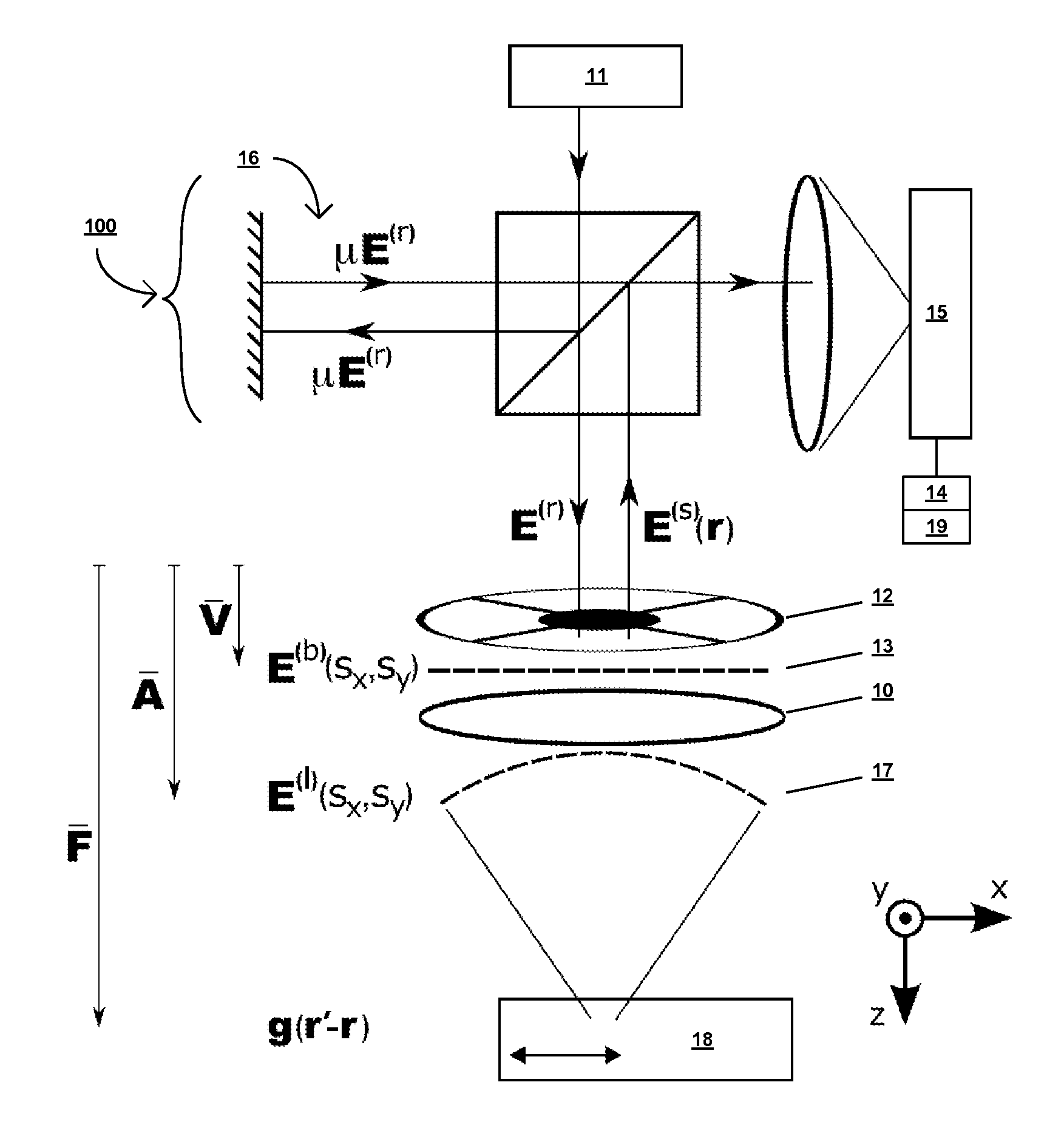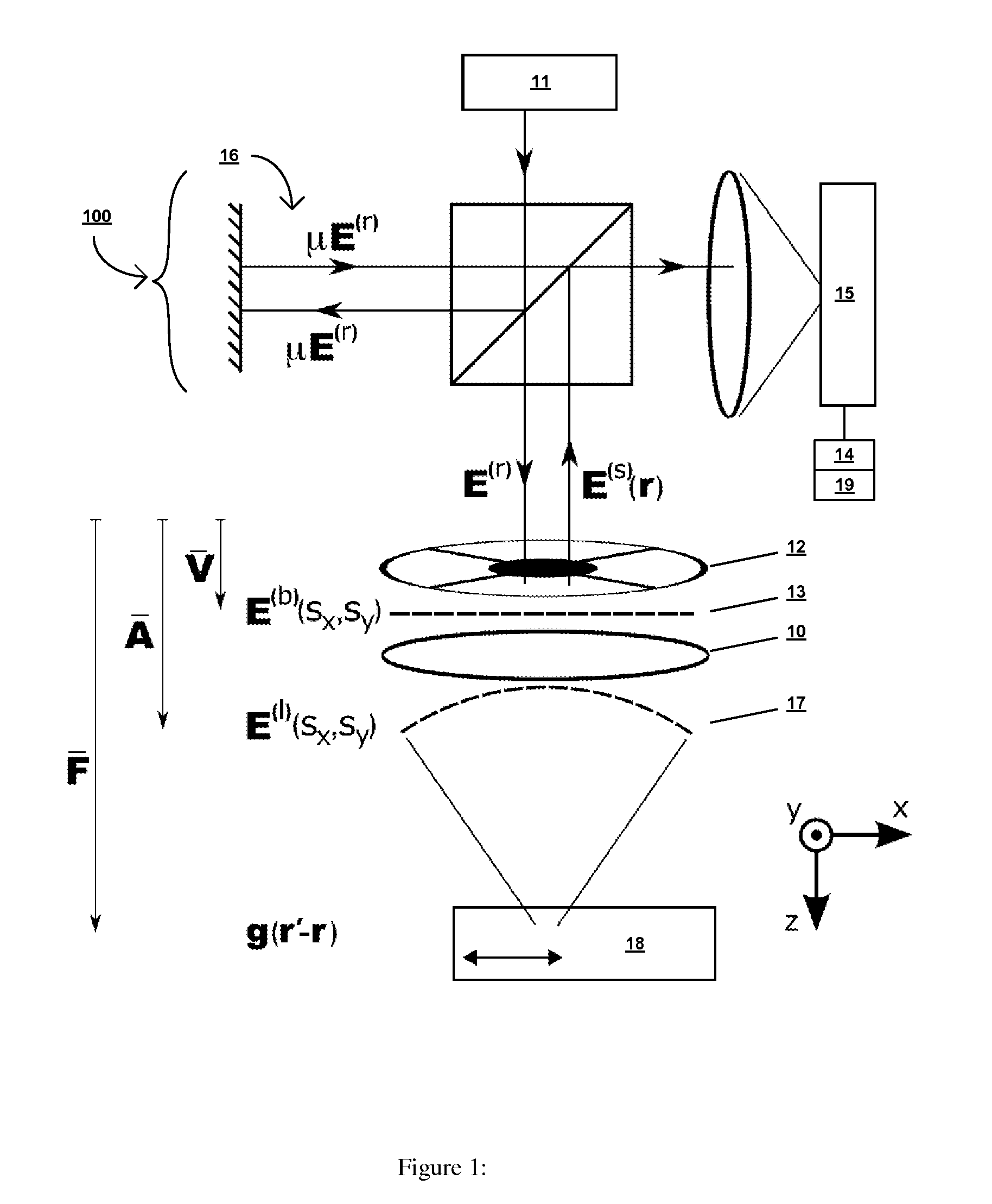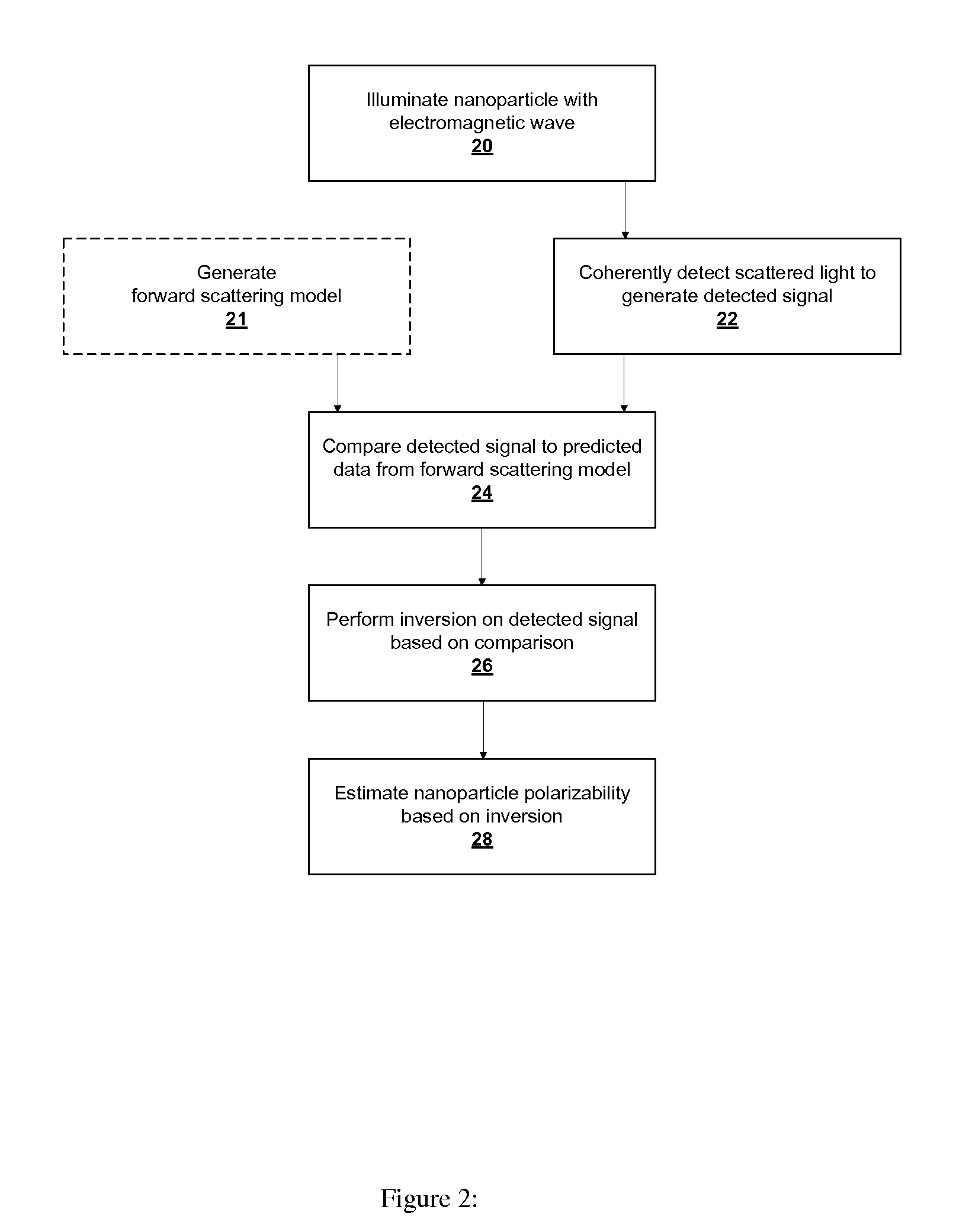Robust Determination of the Anisotropic Polarizability of Nanoparticles Using Coherent Confocal Microscopy
a confocal microscopy and coherent technology, applied in the direction of instruments, chemical methods analysis, optical elements, etc., can solve the problem of not being detected
- Summary
- Abstract
- Description
- Claims
- Application Information
AI Technical Summary
Benefits of technology
Problems solved by technology
Method used
Image
Examples
Embodiment Construction
[0035]Definition. As used in this description and the accompanying claims, the following term shall have the meaning indicated, unless the context otherwise requires:
[0036]An “analyzer” is any optical element that breaks the symmetry of an optical system with respect to the vector orientation of an optical field in a plane transverse to its propagation direction. Examples include both static and dynamic polarizers, whether homogeneous or patterned.
[0037]In accordance with embodiments of the present invention, a nanoparticle is parameterized by a linear polarizability tensor and a three-dimensional position. This parameterization represents prior knowledge of the object, which is used in conjunction with the instrument sensitivity to the polarization and angular distribution of the scattered light. The nanoparticle parameterization implicitly assumes that the particle is sufficiently small, in relation to the wavelength of light, to be characterized by a point polarizability. However...
PUM
| Property | Measurement | Unit |
|---|---|---|
| polarizability | aaaaa | aaaaa |
| illuminating electromagnetic | aaaaa | aaaaa |
| physical parameter | aaaaa | aaaaa |
Abstract
Description
Claims
Application Information
 Login to View More
Login to View More - R&D
- Intellectual Property
- Life Sciences
- Materials
- Tech Scout
- Unparalleled Data Quality
- Higher Quality Content
- 60% Fewer Hallucinations
Browse by: Latest US Patents, China's latest patents, Technical Efficacy Thesaurus, Application Domain, Technology Topic, Popular Technical Reports.
© 2025 PatSnap. All rights reserved.Legal|Privacy policy|Modern Slavery Act Transparency Statement|Sitemap|About US| Contact US: help@patsnap.com



